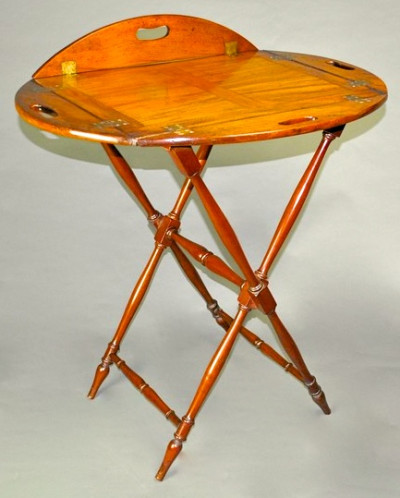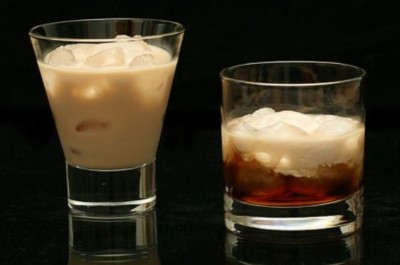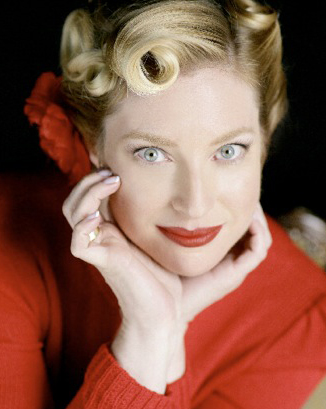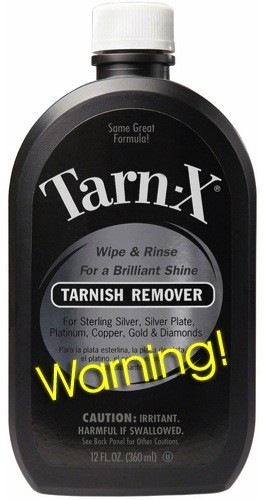
The Modern Butlers’ Journal volume 11, issue 11
International Institute of Modern Butlers
 Message from the Chairman
Message from the Chairman
After months abroad on assignments, we finally managed to stay still long enough to do the photoshoot for the third edition of Butlers & Household Managers, 21st Century Professionals, which is being expanded into a two-volume work and will be published in 2016. Our thanks to Professor Ratliff, friends, and colleagues for their selfless assistance and splendid teamwork.
For anyone in the habit of using silver dip for a quick and easy solution to keeping the silver polished, please read the message at the end of the newsletter from the Institute’s consulting silversmith, Mr. Jeffrey Herman.
Butlers in the Media
For those who may remember the butler in South Africa at the center of a political struggle, it now appears that he accepted bribes to submit false information on his principal to the authorities. It is bad enough trespassing into the principal’s affairs, but to confuse these affairs by spreading disinformation harmful to the principal, at the behest of the principal’s enemies, shows that this “butler” has not the first idea of the difference between a fifth columnist and a butler. Who trained this man, if indeed he were trained at all? The principal accepting the butler back on the job will last only as long as the principal benefits from his presence in attacking his enemies. After that, what? There is a reason loyalty and trustworthiness are top of the list of requirements for a butler in service.
A butler at the Ritz-Carlton Reserve in Puerto Rico, where the Institute trained the butlers at launch three years ago, has been busy setting a good example through his good works in the local community
An enterprising but confused soul is advertising for an “executive butler” with the job description of a business secretary and offering $30,000 p.a.
Lastly, an interesting overview of butler training by various Western butler schools in China. Progress is being made, congratulations to all.
What is a Butler’s Tray—Sometimes Referred to as a Butler’s Table or Butler’s Tray Table?
It seems to be an item that is confused as to its identity—in part because of its dual function, but also, because of misunderstandings by manufacturers and consumers alike over the centuries.
Is a Butler’s Tray one that butlers used in days of yore (long ago), or just one that hangs onto the tails of the butler’s reputation for quality and service? A search online shows many plain, rectangular trays called “butler’s tray,” some with fixed short or long legs attached, separate, or collapsible (in the way that an ironing board is collapsible)—all of which turn the tray into a table of one stripe or another in the same way that room service brings food and beverages on a tray to one’s suite, and sometimes also carries a tray jack (legs) upon which to place the tray while setting up the meal on the preferred surface in one’s suite.
The room-service motif in fact, is in part close to the basic concept of the Butler’s Tray employed by butlers when carrying items to principals and guests located in areas where there were no tables—or when used as a convenient display for alcoholic drinks and their glasses.

These trays were actually two-piece portable tables, developed in England 250 years ago, often with deep sides and hand-shaped apertures built into the sides for handles, and collapsible legs.
A century ago, Butler’s Trays were altered by fixing the legs, long or short, to the tray to form a small table—really losing the portability feature of the Butler’s Tray and turning it into a mini-table.
The Butler’s Tray can still be found today, however, perhaps the best versions (for their versatility) being with hinged sides that can be folded down to expand the rectangle into an oval surface, combined with separate, collapsible legs.
Let’s Talk about Mixology, Part 6
by Amer Vargas
The Big Easy and The Big Lebowski
For all the fans of slow life who like to “take it easy,” today we’ll enjoy the good karma of Jeffrey Lebowski, aka “the Dude,” star of the 1998 Coen brothers’ movie The Big Lebowski. This cult classic depicts a particular moment in the life of that idle man and the way he keeps himself busy, so don’t copy all his behavior. You can, however, enjoy a good time with friends by sharing his favorite cocktail: the White Russian.
The first written reference to the White Russian dates back to November 1965, when it appeared in a Californian newspaper, the Oakland Tribune, as an insert declaring it to be a cocktail prepared with equal parts of Southern (a brand of coffee liqueur), vodka, and cream. The followers of the Dude do not hesitate about the brands to be used as ingredients: the coffee liqueur brand Lebowski requests in the film is Kahlúa, and it is also clearly visible standing next to the Smirnoff vodka he keeps at home to prepare his own White Russians. One further annotation: the Dude doesn’t use cream for his cocktail, but something called “half & half,” also known as light cream (which stands for half cream, half milk).

The recipe currently in fashion has changed the proportion of the ingredients and is a variant on the Black Russian cocktail dating back to 1949, which is prepared with 5 parts of vodka and 2 parts of coffee liqueur. Add 3 parts of cream and you have turned the Black Russian into a White Russian. One thing is certain: the “Russian” part of the name comes from the fact that the main ingredient is vodka.
The cocktail is traditionally prepared in a lowball glass filled with ice, adding the coffee liqueur and vodka to make a Black Russian, and then topping it off with cream for a White Russian, or stirring it gently into a pale cocktail, called the Caucasian.
Fancy something similar but not quite the White Russian or Caucasian itself? Change the vodka for rum and you have a White Cuban. Or you can change the coffee liqueur for chocolate liqueur and enjoy a White Belgian. Or maybe you want to drink a Blind Russian by changing the cream for Baileys Irish Cream (blind because of of the high amount of alcohol). Or perhaps you prefer an Anna Kournikova, in honor of her trim lines, because skim/low-fat milk is used instead of the more fattening cream.
Whatever your choice, take it easy, and Cheers!
Mr. Vargas is the Institute’s Vice President and can be contacted via AmerVargas @ modernbutlers.com
Of Butlers and Roses, Part 19 of 25
by GJ dePillis
How to Make the Cut
 As a butler, you should know if your rose bushes have been pruned properly. This video explains the four easy steps for pruning. In addition, always prune after the first frost. Cut at a 45-degree angle to the outside bud and keep the inside of the bush clean of buds. Remove dead canes (stems) and any branches that are horizontal or cross each other. Your goal is to keep the bush in a “vase” shape with branches growing out and up.
As a butler, you should know if your rose bushes have been pruned properly. This video explains the four easy steps for pruning. In addition, always prune after the first frost. Cut at a 45-degree angle to the outside bud and keep the inside of the bush clean of buds. Remove dead canes (stems) and any branches that are horizontal or cross each other. Your goal is to keep the bush in a “vase” shape with branches growing out and up.
When clipping roses in bloom, carry a bucket of water with you as you gather specimens for your bouquet, and place the cut roses into the water immediately. Once inside, re-trim the cut roses and immediately place them into the vase with water in it already. When cutting roses, the clipper crimps or seals the stem, pinching it slightly; by cutting the stem under water and then placing it in the water in the vase immediately, the stem opens again and the flower can drink the water.
Ms. dePillis is a freelance contributor to the Journal who is based on the West Coast of the United States. She can be reached via depillis at gmail.com
 Consulting the Silver Expert
Consulting the Silver Expert
by Jeffrey Herman
Q: Is a silver dip a good way to clean silver?
A: I have been testing Tarn-X and other dips for decades while recording the effects they have on silver. I routinely receive objects for refinishing due to damage from these destructive products. Tarn-X is used by 95% of the collectors from whom I hear.
Chemical dips—in various degrees—quickly strip the shine from silver, leaving a dull, lifeless appearance.Chemical dips quickly remove factory-applied patinas (if left in the solution for more than a few seconds) or gradually (if dipped quickly each time the object requires cleaning). You’ll notice a soft white surface develop over a very short period of time.
Chemical dips damage every silver alloy including .800 (Germany), .900 (coin), .925, (sterling), .9584 (Britannia silver), and .999 (fine silver), as well as copper and gold. Chemical dips are made up of acidified thiourea (a known carcinogen). Acids are corrosive and will damage silver, niello, bronze, stainless-steel knife blades, and organic materials such as wood and ivory.
Chemical dips cause pitting of the object’s surface which then acts like a sponge, absorb tarnish-producing gases and moisture. The object will eventually require professional polishing and possibly repatination to restore the original finish.
Chemical dips, when used on objects that have sealed components, such as candlesticks and trophies with hollow feet, or teapots with hollow handles, may leak into the cavity through small holes or imperfections in the joints. At this point, it becomes virtually impossible to wash the chemical out. If you’re working on a baby cup with this type of rim, do you really want an infant drinking from it after using a dip?
Tell your friends about these dips and recommend they take them to the next household hazardous waste collection program in their local area.
Other dips containing acidified thiourea include: Connoisseurs Silver Jewelry Cleaner; Ellanar Dip Instant Silver Cleaner, Empire’s Instant Tarnish Remover, Goddard’s Silver Dip, Hagerty Silver Dip, Medallion Care Tarnish Treatment, Midas Silver Tarnish-Off, ShineBrite Silver Dip, Weiman Instant, Tarnish Remover, and Wright’s Instant Tarnish Remover.
One dip, SilverMate, while not containing acidified thiourea, produces the same unwanted results.
Mr. Herman continues to offer his services to our readers for any questions you may have about the care of silver. Either call him at (800) 339-0417 (USA) or email jeff at hermansilver.com
The Institute is dedicated to raising service standards by broadly disseminating the mindset and skills of that time-honored, quintessential service provider, the British Butler, adapted to the needs of modern employers and guests in staffed homes, luxury hotels, resort, spas, retirement communities, jets, yachts, & cruise ships around the world.

